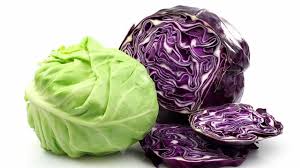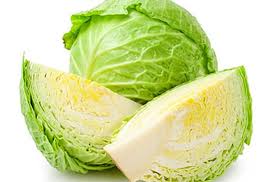While cardiovascular protection and decreased risk of type 2 diabetes have been areas of increased research interest with respect to cabbage intake, it is the area of cancer prevention that still offers the largest number of health-related studies for this cruciferous vegetable.
To date, more than 475 studies have examined the role of this cruciferous vegetable in cancer prevention (and in some cases, cancer treatment). The uniqueness of cabbage in cancer prevention is due to the three different types of nutrient richness found in this widely enjoyed food.
The three types are:
(1) antioxidant richness,
(2) anti-inflammatory richness, and
(3) richness in glucosinolates.
Antioxidant-Related Health Benefits of Cabbage
Cabbage ranked in the WHFoods rating system as an excellent source of vitamin C and a very good source of manganese. But in terms of antioxidants in the newer, phytonutrient category, cabbage is impressive, even among cruciferous vegetables.
Polyphenols rank at the top of the list for phytonutrient antioxidants in cabbage. In fact, one group of researchers has described polyphenols as the primary factor in cabbage’s overall antioxidant capacity.
Even white cabbage (a very lightly-colored form of green cabbage and the most commonly eaten variety of cabbage in the U.S.) provides about 50 milligrams of polyphenols in a half-cup serving.
Red cabbage makes its own unique contribution in this area by providing about 30 milligrams of the red pigment polyphenols called anthocyanins in each half cup. (These anthocyanins qualify not only as antioxidant nutrients, but as anti-inflammatory nutrients as well.)
The antioxidant richness of cabbage is partly responsible for its cancer prevention benefits. Without sufficient intake of antioxidants, our oxygen metabolism can become compromised, and we can experience a metabolic problem called oxidative stress. Chronic oxidative stress, in and of itself, can be a risk factor for development of cancer.
More than a dozen cabbage phenols have been shown to contribute to its antioxidant capacity. These phenols are now known to include: benzoic acid, caffeic acid, cinnamic acid, coumaric acid, dimethylbenzoic acid, gallic acid, hydroxybenzoic acid, hydroxycinnamic acid, phenylacetic acid, rosmarinic acid, syringic acid, trimethylbenzoic acid, and vanillic acid.
Read Also: Red Cabbage, Uses and Nutritional Value
Anti-Inflammatory Benefits of Cabbage

Without sufficient intake of anti-inflammatory nutrients, regulation of our inflammatory system can become compromised, and we can experience the problem of chronic inflammation. Especially when combined together with oxidative stress, chronic inflammation is a risk factor for development of cancer.
The anthocyanins found in red cabbage are well-documented anti-inflammatory compounds and make red cabbage a standout anti-inflammatory food for this reason. However, all types of cabbage contain significant amounts of polyphenols that provide anti-inflammatory benefits.
Anthocyanins are also compounds that fall into the general category of polyphenols known as flavonoids, and they are definitely not the only important flavonoids provided by cabbage.
Included in the list of cabbage flavonoids are the following anti-inflammatory compounds: artemetin, betanidin, butein, equol, hydroxyflavone, kaempferol, luteolin, malvidin, naringenin, pelargonodin, purpurogalin, quercitol, and tetrahydrochalcone.
Glucosinolates and Cancer Prevention from Cabbage
Given the roles of oxidative stress and chronic inflammation as risk factors for cancer, the antioxidant and anti-inflammatory richness of cabbage would provide anti-cancer health benefits without the addition of cabbage’s glucosinolates. But glucosinolates are cabbage’s trump card with regard to “anti-cancer” benefits.
The glucosinolates found in cabbage can be converted into isothiocyanate compounds that are cancer preventive for a variety of different cancers, including bladder cancer, breast cancer, colon cancer, and prostate cancer. Some of the key glucosinolates present in cabbage and their corresponding isothiocyanates are listed in the chart below.
Read Also: Amazing Advantages of Eating Raw Cabbage
Glucosinolates in Cabbage and their Anti-Cancer Thiocyanates
| Glucosinolate | Derived Isothiocyanate | Isothiocyanate Abbreviation |
| glucoraphanin | sulforaphane | SFN |
| glucobrassicin | indole-3-carbinol* | I3C |
| sinigrin | allyl-isothiocyanate | AITC |
| glucotropaeolin | benzyl-isothiocyanate | BITC |
* Indole-3-carbinol (I3C) is not an isothiocyanate. It’s a benzopyrrole, and it is only formed when isothiocyanates made from glucobrassicin are further broken down into non-sulfur containing compounds.
The isothiocyanates (ITCs) made from cabbage’s glucosinolates act to protect us against cancer through a variety of different mechanisms. In some cases, they help regulate inflammation by altering the activity of messaging molecules within our body’s inflammatory system.
In other cases, they improve our body’s detoxification system and leave our cells with a smaller toxic load. But the bottom line is decreased risk of cancer from consumption of cabbage and its glucosinolates. We’ve seen one study, from Poland, showing impressive reduction of breast cancer risk in women consuming large amounts of cabbage.
(In this particular study, this reduction in risk was associated with consumption of at least 4 cabbage servings per week, in comparison with the once-per-week serving consumed by women with higher breast cancer risk.)
In this context of glucosinolates, isothiocyanates, and cancer prevention, it is worth noting that one of the I3C (the isothiocyanate made from glucobrassicin) can be further converted in the stomach under healthy acidic conditions to diindolylmethane (DIM), which has also been shown to be a valuable cancer-preventive compound.
Digestive Tract Support of Cabbage
Long-established in health research is the role of cabbage juice in helping heal stomach ulcers (called peptic ulcers), but more recent studies on cabbage have looked at the overall health benefits of this food for the stomach and digestive tract as a whole.
Present-day studies make it clear that cabbage contains a variety of nutrients of potential benefit to our stomach and intestinal linings. These nutrients include glucosinolates (and the anti-inflammatory isothiocyanates or ITCs made from them), antioxidant polyphenols, and the amino acid-like substance called glutamine.
In the case of ITCs, digestive tract benefits include proper regulation of bacterial populations of Helicobacter pylori inside the stomach. These bacteria are normal stomach inhabitants, but their populations can become too large and they can latch onto the stomach lining in an undesirable way. The ITCs made from cabbage’s glucosinolates can lower the risk of these unwanted stomach events.
It would also be wrong to move on from this issue of digestive support without mentioning the very good fiber support provided by cabbage. At nearly 4 grams per cup and only 44 calories, cabbage provides nearly 1 gram of fiber for every 10 calories!
This very low “calorie cost” of cabbage fiber makes it easy to add fiber to your diet without adding calories. And this added fiber can be very helpful in improving digestion of food.
Related: List of Problems Confronting Livestock Production
Cardiovascular Support from Cabbage
Recent studies on cabbage intake especially studies on intake of red cabbage have looked carefully at the potential for cardiovascular support from this vegetable. The results have been encouraging. Blood levels of beta-carotene, lutein, and total blood antioxidant capacity have been found to increase along with increasing intake of red cabbage intake.
At the same time, total cholesterol, total LDL cholesterol, and total oxidized LDL have been found to decrease. Reductions in oxidized LDL are a particularly noteworthy finding since oxidized LDL is a known risk factor for development of atherosclerosis.
One of the ways in which cabbage intake can lower your total and LDL cholesterol is through the process of binding with bile acids. Your liver uses cholesterol as a basic building block to produce bile acids.
Bile acids are specialized molecules that aid in the digestion and absorption of fat, and when they are present in your digestive tract, fiber-related nutrients in cabbage can bind together with them for eventual excretion.
Whenever this process takes place, your liver needs to replace the excreted bile acids by drawing upon your existing supply of cholesterol, and as a result, your cholesterol level drops down.






